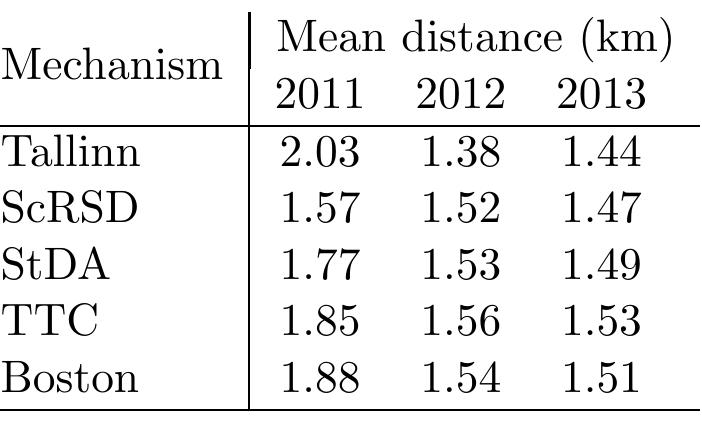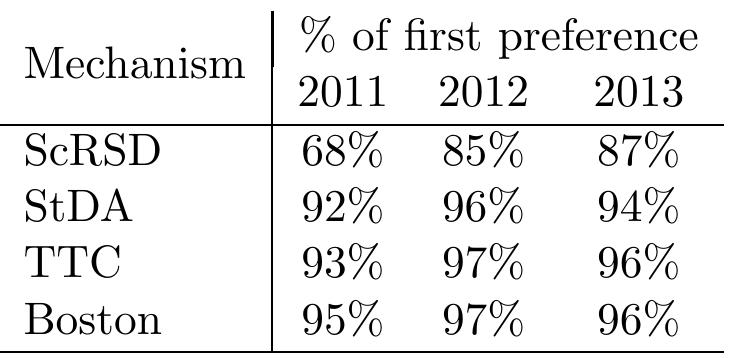Key research themes
1. Under what preference and structural conditions does a unique stable matching exist in two-sided matching markets?
This research theme investigates the necessary and sufficient conditions on agents' preferences and problem structure that guarantee the uniqueness of stable matchings in two-sided markets. Uniqueness is important as it enables clear predictability, ensures efficiency and strategic truthfulness, and enhances robustness to informational uncertainty. The concept of a matching problem's normal form and acyclicity of preferences on it are key contributions that unify and extend earlier sufficient conditions into a full characterization.
2. How do strategic behaviors, information asymmetry, and decentralized search dynamics influence equilibrium and efficiency in two-sided search and matching markets?
This theme examines the interaction between agents' search strategies, the role of intermediaries or matchmakers, and the impact of pricing schemes on participation decisions and market outcomes in decentralized two-sided search settings. It also covers how information incompleteness and incentives shape investment and matching behaviors, ultimately affecting market efficiency and equilibrium structure. The studies combine dynamic models and mechanism design insights to understand decentralized equilibrium formation.
3. What are the implications of matching mechanisms and pricing strategies on efficiency, equity, and market design in many-to-many and large two-sided matching markets with transfers?
This research area focuses on structural and algorithmic designs of many-to-many matchings with contracts and the role of transfers under substitutable preferences, balancing expressiveness of contracts and stability of outcomes. It also examines pricing strategies and market thickness control in large or continuous market models with general utilities and network effects. Key interests include trade-offs in mechanism choice for fairness, efficiency, strategic robustness, and practical computability in complex markets.









